07.03.2014 – D.T., a 13 year-old boy – Diagnosis: Hypertensive hydrocephalus syndrome (inner hydrocephalus, repeated shunting). Fluid dynamic crises. Mild right-sided hemiparesis. Peritoneal adhesions.
Main complaint: hydrocephalus crises
A child was born healthy and full-term. In the maternity hospital he was vaccinated with BCG and Hepatitis B. His growth and development were normal. By the age of 8 months his head began enlarging (computer tomography showed a postcranial fossa cyst that prevented liquid flow). There were no more vaccinations done. At the age of 1 year the boy had the first fit of occlusive hydrocephalus, which was the reason for a shunt installation. Then there followed 9 neurosurgical operations the last one being a cerebral sinus endoscopic perforation 5 years ago, that was followed by right-sided paralysis (by the time of the 1st homeopathic consultation there was some right-sided weakness left); plus few operations were conducted because of the peritoneal adhesions – since fluid has been abducted into the abdominal cavity.
The patient’s parents applied for the first consultation on the 07.03.2014.The main complaint by that time: fluid dynamic crises, the fits beginning with the drawing pains in the legs (2). These are followed by a heaviness and bursting pain in the forehead (3) with vomiting (2), ameliorated by cold applications (2); after vomiting the head ceased to ache and the boy slept. The crises happened several times a month, which exhausted the child. He was able to visit only 1-2 classes a day at times, so he was individually homeschooled.
Other complaints:
An allergy –after being exposed to the sun the boy develops a skin rash (2). His head perspires excessively in sleep (2).
Medical history: the description is given within the main complaint. The boy’s mother can’t remember him being sick with acutes, accompanied with high fever. The boy has had no acutes at all.
Family medical history: Boy’s parents are healthy. There are no ailments worth mentioning in the family.
General modalities: warm-blooded (2); desire for cool air (2);
There are no sleep complaints, sleeping positions being on the back or both sides.
Food modalities:
Desires: garlic (3), the boy eats a head of garlic with every meal daily; onion(2); salt (3), salted, pickled food (2);
The boy dislikes potato (1), fat (1).
Mental–emotional symptoms:
At school and with his study in general the boy is a perfectionist (2), being indifferent to his home duties. He is easily offended (2), weeping after being offended(2), consolation aggravates(2) – he cries violently, better to be left alone. He is kind, conscientious (1).
Analysis and Prognosis:
Hydrocephalus is brain pathology, being a severe disease regarding the physical level; given a fluid flow obstruction it is possibly incurable. However, over the last 5 years, after the 3d cerebral sinus perforation surgery, there was no disease progression. Despite the hydrocephalus, the boy’s intellectual level is good and he gets the best marks at school. The absence of the acutes probably shows a low level of health: the 9th level of the group C.
The chosen symptoms:
Repertorisation:
Differential diagnosis:
Natrium muriaticum is used for hydrocephalus treatment, being presented in 2nd degree in the current rubric of the repertory; the food modalities of the case match Natrium muriaticum; the essential mental-emotional characteristics of the remedy are similar to those of the case – the boy is a perfectionist, he is weepy, easily offended, feeling worse from consolation. The warm-bloodedness (2) also matches the modality of the remedy. The patient develops the skin rash under the sun which is another confirmation for Natrium muriaticum.
Сalcarea carbonica – is used for hydrocephalus treatment, but being a cold remedy can’t be confirmed by the main other modalities of the case.
Carcinosinum – is easily offended, perfectionist, it covers the food modalities of the case, but is not present in the rubric describing hydrocephalus.
Sulfur – is a warm-blooded remedy, could be useful in the hydrocephalus treatment but covers neither the skin rash nor headache modalities nor the mental-emotional characteristics of the case.
Prescription (07.03.14): Natrium muriaticumm 12C daily. The potency and repetition frequency were conditioned by the depth of the disease and the patient’s level of health.
The 1st Follow-up 14.04.2014 (5 weeks later):
During the follow-up the mother reported that the headaches had become 50% less frequent and less bothering; there was no aggravation after the remedy. The general health got better; there were no other changes reported. The recommendation was to continue with the same remedy and potency and come for the follow-up in case of an aggravation.
The 2nd Follow-up 07.08.2014 (3 months later):
The patient’s complaint was about the increase in headaches. His weepiness was 30 % less and other symptoms remaining unchanged. The recommendation was to take Natruium muriaticum 14C daily.
The 3d Follow-up 06.12.2014 (4 months later):
The patient’s phoned complaining about a hydrocephalus crisis that was not ameliorated by taking Natrium muriaticum 30C. Given the severity of his state the boy was observed at home. The observation results: the boy was lying on a flat pillow, his fever being 37.6C, his face being puffy, red, swollen. He vomited immediately if trying to rise from bed. He complained about severe ringing in the head, severe frontal bursting headaches, heaviness and pains behind the eyes and between eyebrows (3); this state was ameliorated by cold applications (3); he asked his mother to put ice to his forehead and to rub his head (3). The cervical region was rigid (2); the boy was very weak (3) and sleepy and after saying a couple of words he would fall asleep. He had nausea (3), ameliorated by deep breathing and icy-cold drinks. His state was worse after consolation (2). The boy developed convergent strabismus (3).Vomiting was repeated. According to the patient the reason for this crisis was overloading at school.
Repertorisation:
Differential diagnosis
As an eliminating symptom – hydrocephalus – lies with head low- was chosen, being particular and peculiar (2).
Apis –is useful for hydrocephalus (3) and it is present in the rubric both in the repertory and Materia Medica, covering the mentioned above peculiar eliminating symptom(2). Apis is a complementary remedy for Natrium muriaticum. The headache of Apis is ameliorated by cold applications as in this case. The remedy can develop the desire for cold drinks.
Mercurius solubilis is present in the hydrocephalus rubric in the 2nd degree, but its headache is not so severe and the essential characteristics do not match those of the case.
Zincum metallicum is used for hydrocephalus, but neither covers the headache modalities nor matches any other case symptoms.
Sulphur – is contradicted by mental-emotional characteristics of the case.
Prescription: Apis mellifica 30C 5 globules at once with the following prescription: 4-6 times a day till the amelioration.
The 4th Follow-up 2 days later (at home)
After Apis the state got better for one day, vomiting ceased; the boy could rise but walking was difficult still. The next day the headache returned and aggravated. There appeared a new symptom: When looking he didn’t see, while listening he didn’t hear, other symptoms being unchanged. The results of the repertorisation were revised. The remedy Helleborus, was included in the differential diagnosis, taking earlier the 16th place in the repertorisation. This remedy was placed on the 1st place and explained by Vithoulkas Expert System:
Prescription: Helleborus XXX LM 8 globules in a glass of water, to give by sips every 30 min. By the time of Helleborus ХХХLM prescription, the boy was in the neurosurgical department. The conventional treatment didn’t give any effect. They decided that the shunt was not functioning anymore and decided on another surgery – shunt replacement. The boy was given Helleborus and his state got better in one hour. The headaches were gone completely and the boy stood up and asked for a meal. The next day he was discharged from hospital without any surgery. His state got better over several days along with the strabismus disappearing. He took the remedy 3 days (3 times a day).
16.01.2015: No any headaches but the stiffness in the cervical region remained (1).
Helleborus LM XXX was prescribed twice.
20.02.2015: the patient developed ARVI with 39C fever, lasting for 2 days. Before the homeopathic treatment there had been no acutes with high fever. The child was sick for 4 days, having some cough and coryza. Since the overall state was not severe, no remedies were prescribed.
Conclusion: the appearance of the acute with high fever shows the patient’s transfer into a higher health group II, showing that the case is curable.
03.08.2015: From March till June 2015 the boy studied the whole day at school. His marks were excellent. During that period there followed 3 hydrocephalus crises (with 1 month interval), one of which was treated with Helleborus 30C (after 2 doses during one day), 2 others having been treated with Helleborus 200C (1-2 doses after C30 failed). In June 2015 the patient had another hydrocephalus crisis, accompanied by the same symptoms and modalities. Helleborus 200C gave no effect then, while Helleborus 1M brought an amelioration in 2 hours.
Conclusion: Helleborus is a correct remedy showing a very good effect during crises and deep action, keeping in mind ARI with the fever 39 in February. The pathology is structural and the organism needs much time to cure it.
04.08.2015: The patient had a severe and long-lasting crisis, for which he was given sequentially Helleborus 30,200,1000 without lasting effect. Then the 10M potency was given for 5 days – 5 globules 3 times a day with a quick and good effect. There was no allopathic medication taken.
25.08.2015. After the last prolonged crisis a strong apathy appeared (3). There were no headaches, but the boy was inactive, stayed in bed for the whole day, watching TV. He had no appetite (2). He had stool 3-4 times a day, it was thin (2), painless, not exhausting. A partial atrophy of the optic nerve discs of both eyes still remained (this was going on many years before) as well as retinal swelling.
Prescription: Phosphoricum acidum 200C twice was given. One week after he recovered from this state of apathy and in the new school year the boy could attend school the whole day as all the other pupils. There was an examination conducted in September in an ophthalmologic clinic: there was neither eye-ground pathology nor optic nerve atrophy found.
30.03.2016: The next request for the consultation was recorded in the end of March 2016 because of an ARVI with 39-40C fever persisting for 4 days. Taking into account the marked weakness, chill, congestion, sleepiness, the patient was prescribed Gelsemium 30C, which brought a slight amelioration, being given for 2 days. Conclusion: Gelsemium was similar but not exact). The boy was cured again with Helleborus 30c, that was taken for 2 days (3 times a day).
The patient needed no consultations afterwards. His mother reported that the boy finished another school year with excellent marks, having no complaints.
04.06.2016: No more crises. The boy felt good. He was examined by a neurologist who didn’t see him more than a year. The neurologist didn’t find any signs of pathology and was much surprised. She didn’t give any allopathic remedies and recommended to continue with homeopathy.
03.02.2017: Everything was ok, no crises, no acutes, no any other complaints.
12.05.2017: At the end of the school year the boy was a little bit tired and noticed slight headaches from mental exertion sometimes (worse when the weather changes to cloudy and rainy). The boy still was very responsible and had all excellent marks at school. Desire for smoked meat (2), fat (2).
Prescription: Calc-phos LM XXX in the dilution every day for 20 days.
01.11.2017: In general everything was ok, no crises, no acutes, but the boy developed tics during the last few months (jerking of the lips, eyebrows sometimes). He became sleepy and often slept in the afternoon. Desire for smoked meat (2), fat (2), garlic (2). Conclusion: a new problem appeared, but no clear picture of a new remedy. So we’d try the old one which helped the boy very much. Prescription: Helleborus LM XXX every day for 5 days.
12.12.2017: The tics and sleepiness went away. Today the boy developed ARVI with 37,8 fever, the nose obstruction, the pressing pain in the forehead, heaviness in the root of the nose. In the blood test WBC = 16x 10*9/l Prescription: Helleborus 200 three times daily for 3 days.

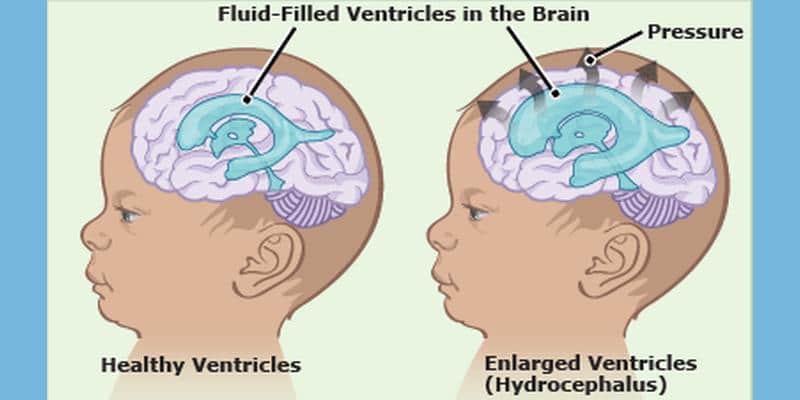
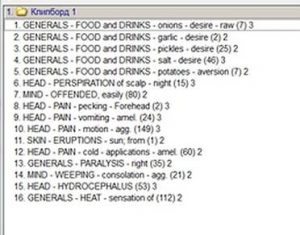
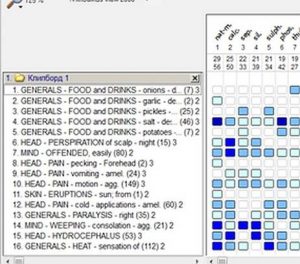


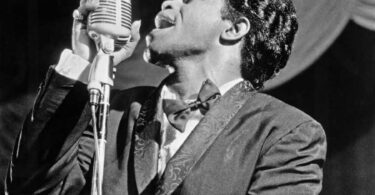
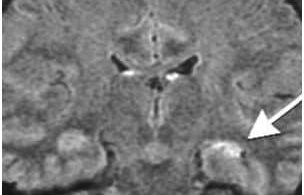
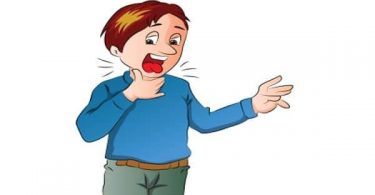
I have not seen the designation LM XXX before. Is it the same as LM 30?